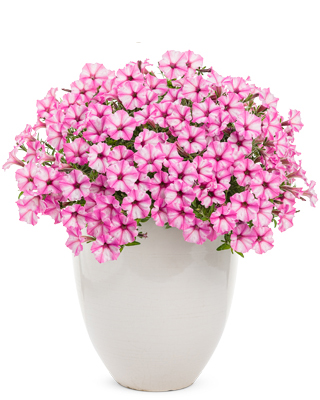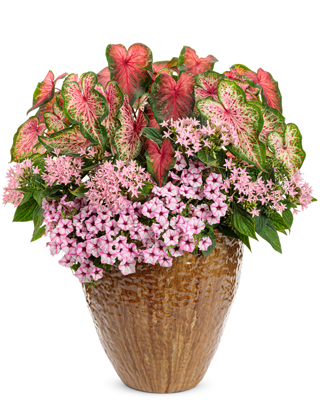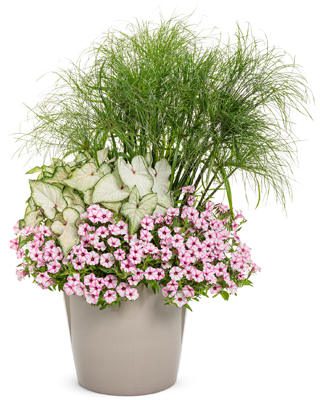
SUPERTUNIA MINI VISTA® PINK STAR PETUNIA IN UPRIGHT CONTAINERS
Upright containers made of glazed clay and other materials that are less porous are ideal for growing for Supertunia Mini Vista® Pink Star which likes the more consistent moisture levels they provide. Even better, use a self-watering AquaPot and you’ll only need to water once per week. Scroll down to find recipe ideas as well as best practices for planting and tending our Annual of the Year in upright containers.
Click the images above to learn more about each recipe.
PLANTING YOUR UPRIGHT CONTAINER
- You’ll need a total of three 4-inch containers to fill one 12-16” container. You could plant a single container of all Supertunia Mini Vista Pink Star petunias or plant a combination container using one or two vigorous companions.
- Space the plants equally in a triangular pattern in the container so it fills out on all sides.
- Use a good quality potting soil in your container. Better potting soils are light in texture and weight, and water drains easily through them.
- Mix a bit of slow release plant food into the potting soil before you add the plants. Follow the package instructions to know how much to use. This will ensure a small amount of food is available to the plants’ roots over the season.
- Water your newly planted container immediately to help the soil settle in around the plants’ roots.


